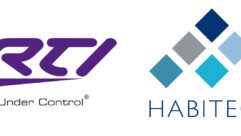Care & Feeding of the Residential Client
Aug 1, 2001 12:00 PM,
Bob Heil
MUCH IS WRITTEN ABOUT THE HARDWARE, PROGRAMMING and installation techniques of home theater systems, but it is harder to find useful information about the most important factor — the client. The truth is that all the technical wizardry in the world won’t make you a successful installer if you aren’t able to meet with your clients and instill them with confidence in your work. Most clients prefer a contractor who communicates clearly and frequently, and who shows them how to use the equipment, over one who installs the greatest system ever without telling them how to use it. That’s why meeting with your client and making certain they understand the project is critical to your success. Not just the excitement of home theater, but also the way it will work for them, must be exhibited to clients during your meetings.
KEEP COMMUNICATIONS SIMPLE
It is important to keep your explanations of the system very simple. The client must be able to understand how to work the marvelous system and how it will be installed into the new home. But often, sales staff get caught up in hyping the latest technologies, screen sizes, and true broadcast HDTV. In doing all of this, it is very easy for the sales staff to miss the basic features of the system, which may be the most important aspects to the client. Low-tech features such as cassette decks, AM and FM radio reception, and the ability to play phonograph records get overlooked. The client smiles and nods at all the new technology, but inside they’re wondering if your system is going to do the simple things they want it to do.
GATHER INFORMATION
Early preparation helps. First, have the client fill out a customer profile sheet. This should include client name, address, contact numbers, and contractor’s name and phone number. Gather all of the vital information that you need to build a profile on this customer. This data should be entered into your computer file for this job and should follow the client throughout the project.
During this first meeting, you are getting the obvious information. But you should also learn more about the lifestyle of this family to pick up on their needs and wants. So many times a small, high-tech product will answer those desires and make you and your services look even better to this new client.
You must make them comfortable with all of this high-tech equipment that they may have heard about. The reality is that for many folks even a simple remote control can be way too complicated. Get the specific information you’ll use during the job, but also gather the subtler facts: What do they really want? What are they open to? What technologies are they dubious of?
THE PRE-WIRE MATRIX
One of the most useful tools you can provide your client at this initial meeting is the pre-wire matrix (on page 56). Giving the client family a pre-wire matrix and having them spend a few days discussing exactly where they want televisions, background music speakers, door cameras, etc., gets them more involved with the project and provides you with valuable input.
With the pre-wire matrix, the client can keep a watch on the approximate cost as the project moves along. I have found this exercise invaluable over the past 15 years at Heil Sound where we developed this matrix. I’ve also noticed that since clients take the matrix form home, they develop a deeper understanding of the inner workings of their home and the system they want installed.
The Pre-wire Matrix Is Their Purchase Order. This form also makes your billing and bookkeeping easier. The matrix provides proof of exact costs during the project. For example, 16 audio drops times $45 each, plus 10 hours of labor at $55 per hour is clearly outlined — nno question, no debate. Since the drops are done at the exact places the client marks on the matrix, you have the seal of approval, and you can use the data as a purchase order.
TRACKERS AND UPDATE LETTERS
After that first meeting when they have returned the pre-wire matrix to you, it is important to write a follow-up letter thanking your clients for their time in discussing the project. Give them a run down on exactly what and how things will happen in the process they are about to begin, so there is nothing left to the imagination as you strive toward the finished project.
Begin Your Proposal Tracker
Once you have obtained permission to start, begin your proposal tracker on this client. What we do is paste this tracker sheet inside the customer file folder for easy follow-up during the project. There is an opportunity to send six different letters to the client during different phases of the project. Don’t miss these opportunities: Sending a simple letter — it can even be a form letter — will increase your clients’ confidence in you.
Consultation Letters
The first letter you send summarizes the project that the client helped design (using the pre-wire matrix). Thank them for the business, and spell out every detail of the project. Give an approximate timeline, and make sure they know how to contact you if things change or if there are obstacles.
After the opening letter, schedule a time early on in the project to send a proposal letter outlining detailed costs for each component in the system and asking for the deposit check to begin the project. A receipt for their deposit check and your acceptance/thank-you letter should be sent soon after to keep their assurance.
Progress Letters
During the drywall installation, and at other key times during the building process, you should send out progress letters. If there are any bonus dollars from manufacturer promotions, or if your labor was less than anticipated, the progress letters are the best place to inform the client about the credit issued for those items. Everyone likes to receive good news in the mail!
At the end of the project, send a thank-you letter and inquire about any referrals they can give you. Referral business is the lifeblood of our industry, and if the client has had a good experience, they’ll be glad to spread your name among their friends.
FINAL TESTS AND TRAINING
Each phase of a home theater project is important, but the final phases — testing equipment and training family members — is vital. If the family does not understand how to use the system, their enjoyment of it — and the reputation of your company — dwindles. With proper training and a bit of personal attention, however, they’ll be using the system like pros, and you will be seen as the hero when they tell their friends about their new home theater. Surprisingly, the thing that makes a system so special to the client is not always the greatest equipment money can buy, but rather that personal touch your company has given throughout the project.
Bob Heil’s love for movie theaters began in 1956 playing the mighty Wurlitzer at the Fox Theater in St. Louis, Missouri. Heil Sound is a company that designs and installs home entertainment systems.
Stick to the Basics
All of your client communications should keep the scare factor to a minimum. Don’t try to impress them with technical jargon. Intermodulation distortion specs, amplifier slew rates, MosFet vs. V-Fet output devices, etc., are all issues that will typically confuse clients, not enlighten them.
The project will go more smoothly if you stay focused on system functionality. Stick to subjects such as the concept of multiroom audio, digital video, Dolby Digital, the universal remote control, AM/FM receiver functions — the things they can relate to and will use every day. Without a doubt, the system you are likely to install will do more than this, but most end users never use all of a system’s features anyway.
Make sure your clients know how to work their systems. As long as they can watch DVDs in their surround-sound home cinema, they’ll never care why it works. If they do, they’ll ask, and you can explain it then.
The Pre-wire Matrix
Give the client family a pre-wire matrix and have them spend a few days discussing it. This gets them more involved with the project and also serves as their purchase order. Adapt your own version of this worksheet.
The Triple-Phase Installation
You can think of a project as having three phases: the pre-wire phase, the trim phase and the finish phase. This breakdown works well for billing as you can bill at the end of each phase. Keep a record in your proposal tracker of the exact dates each phase is finished. A box on the proposal tracker can be checked at the end of each phase to monitor progress. Keeping track of all the equipment you use is another very important step. A box in the proposal tracker helps remind you if the products have been ordered and if they are in your warehouse.










